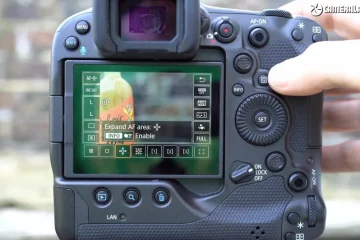Background: Telegram and WhatsApp
Founding and development history
Telegram, founded by Pavel Durov and his brother Nikolai, was launched in 2013. Its development focused on providing a secure and privacy-oriented messaging platform. On the other hand, WhatsApp, created by Jan Koum and Brian Acton in 2009, initially aimed to offer users a simple and efficient messaging solution.
Key features and functionalities
While both Telegram and WhatsApp offer messaging capabilities, they differentiate themselves through unique features and functionalities. Telegram prides itself on its security measures, customization options, and the presence of bots and automation. WhatsApp, on the other hand, emphasizes seamless voice and video calls, location sharing, and recent integration of business solutions.
User Interface and User Experience
Telegram’s interface and UX
Telegram boasts a user-friendly and intuitive interface. Navigating through the app is a breeze, thanks to its well-organized layout. Furthermore, users have the freedom to customize their experience by changing themes, fonts, and even creating personalized stickers.
WhatsApp’s interface and UX
Similar to Telegram, WhatsApp offers a clean and user-friendly interface. Its navigation is straightforward, allowing users to easily access chats, contacts, and settings. Although customization options are more limited compared to Telegram, WhatsApp focuses on delivering a seamless and hassle-free user experience.
Security and Privacy
Telegram’s security measures
One of Telegram’s standout features is its end-to-end encryption, ensuring that messages remain private and secure. Additionally, Telegram offers “Secret Chats,” where messages can be self-destructed, preventing any unauthorized access to sensitive information.
WhatsApp’s security measures
WhatsApp places a strong emphasis on security as well, implementing end-to-end encryption for all messages, calls, photos, videos, and documents shared on the platform. Users can also fine-tune their privacy settings to control who can view their profile information and status updates.
Communication Features
Chat options in Telegram
Telegram offers various chat options, including group chats and channels. Group chats enable users to communicate with multiple individuals simultaneously, while channels act as public broadcasts, allowing users to share messages with a large audience.
Chat options in WhatsApp
Similarly, WhatsApp provides group chats, allowing users to engage in conversations with multiple participants. Additionally, WhatsApp offers “Broadcast Lists,” enabling users to send messages to multiple contacts without creating a group chat.
Media and File Sharing
Telegram’s media sharing capabilities
Telegram excels in media sharing capabilities. Users can easily share photos, videos, and files of various formats and sizes, without any compression or loss of quality. Additionally, Telegram’s cloud-based storage ensures that media files can be easily accessed across devices.
WhatsApp’s media sharing capabilities
WhatsApp also provides seamless media sharing capabilities, allowing users to send photos and videos to contacts. However, compared to Telegram, WhatsApp compresses media files, compromising on the original quality. Nonetheless, WhatsApp’s file sharing feature allows users to share various document formats conveniently.
Additional Features and Integrations
Telegram’s unique features
Telegram differentiates itself through unique features such as bots and automation. Bots serve various purposes, from providing news updates to managing to-do lists. Additionally, Telegram offers a built-in photo editor, enabling users to enhance their pictures directly within the app.
WhatsApp’s unique features
WhatsApp shines with its emphasis on voice and video calls. Users can make high-quality calls, both audibly and visually, with ease. Another notable feature is the ability to share live locations, making it convenient for meeting up with friends or coordinating professional appointments.
Availability and Accessibility
Telegram’s platform availability
Telegram is available across multiple platforms, including mobile, desktop versions, and even web browser access. This broad availability ensures seamless communication across various devices, allowing users to stay connected regardless of their preferred platform.
WhatsApp’s platform availability
Just like Telegram, WhatsApp maintains platform availability across mobile and desktop versions, along with web browser access. This wide accessibility ensures that users can engage in conversations from any device, enhancing convenience and versatility.
Usage and Popularity
Global adoption of Telegram
Telegram has gained substantial global adoption over the years. With millions of active users worldwide, Telegram stands as a formidable competitor in the messaging app landscape. Its popularity varies across regions, with certain countries showcasing a higher preference for this platform.
Global adoption of WhatsApp
WhatsApp, in contrast, has achieved unparalleled global adoption, boasting billions of active users. This messaging giant is widely popular across regions, making it one of the most widely used messaging apps globally.
Comparing Reliability and Performance
Telegram’s performance and uptime
Telegram boasts a robust infrastructure that ensures reliable performance. The app rarely experiences downtime, allowing users to communicate effectively without interruptions. This stability contributes to Telegram’s reputation as a reliable messaging app.
WhatsApp’s performance and uptime
Similarly, WhatsApp’s performance and uptime are commendable. The app’s infrastructure and subsequent updates ensure that users can rely on a seamless messaging experience with minimal disruptions.
Monetization and Business Solutions
Telegram’s approach to monetization
Telegram takes a unique approach to monetization, primarily through advertising. While traditional advertising is not present within the app, Telegram explores innovative ways to leverage its user base effectively. Additionally, they offer premium features that users can opt for at a cost.
WhatsApp’s approach to monetization
WhatsApp, on the other hand, has pivoted towards business solutions as a means of monetization. By offering specific tools and features tailored to businesses, WhatsApp provides value-added services for enterprises to connect with their customers more efficiently. Recent changes include introducing a payment feature for businesses to facilitate seamless in-app transactions.
Future Developments and Updates
Telegram’s roadmap for innovation
Telegram is constantly committed to innovation, with regular updates and new features. Their roadmap includes enhancing security measures, expanding automation capabilities, and continuously improving the overall user experience.
WhatsApp’s upcoming features and improvements
WhatsApp consistently invests in developing new features and enhancing existing ones. Upcoming updates may include advanced video conferencing features, improved media sharing options, and further integration of business solutions to meet the evolving needs of its users.
Summary and Recommendations
After considering the various aspects of Telegram and WhatsApp, it becomes evident that both messaging apps have their strengths and unique offerings. For those prioritizing secure and privacy-oriented messaging, Telegram is an excellent choice. On the other hand, WhatsApp excels in providing seamless communication through voice and video calls, making it ideal for users who heavily rely on these features. Ultimately, the choice between the two depends on individual preferences and specific needs.
Conclusion
In the fierce battleground of messaging apps, Telegram and WhatsApp stand out as prominent contenders. Understanding their features, security measures, and unique offerings empowers users to make an informed decision based on their specific requirements. Whether it’s Telegram’s emphasis on privacy or WhatsApp’s seamless communication capabilities, users can choose the messaging app that best suits their needs and preferences.



